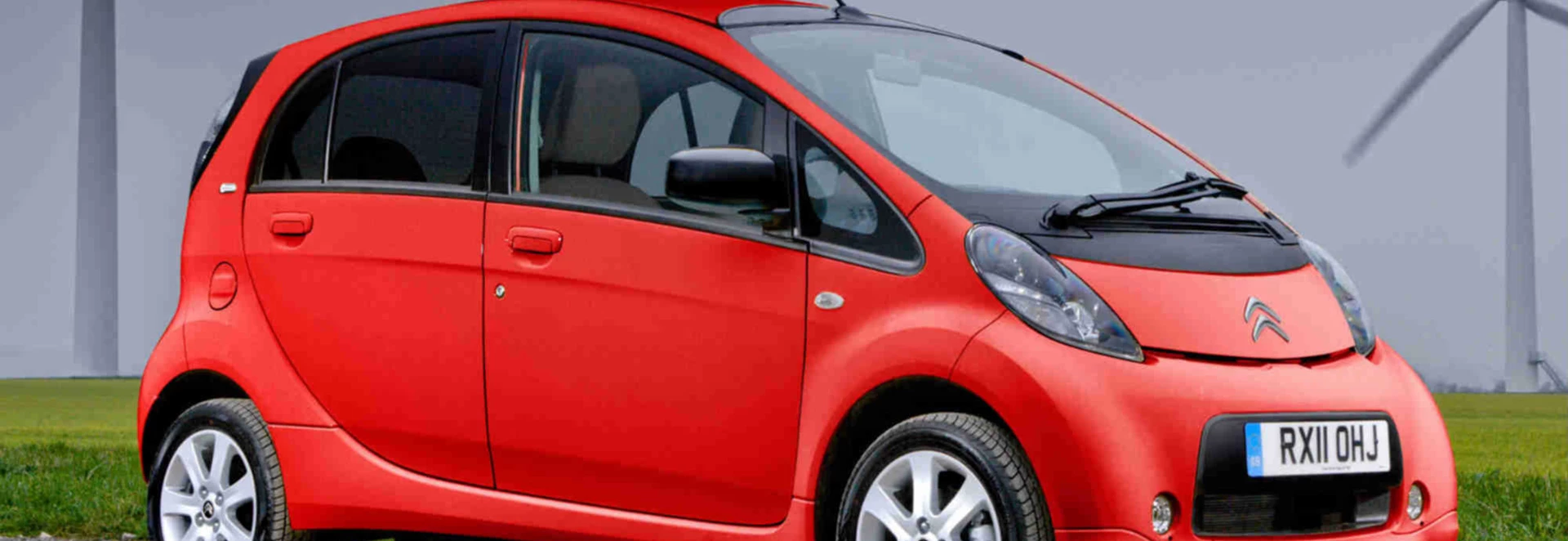The C-Zero is Citroen's version of the Mitsubishi i-MiEV electric city car, also available in further rebadged form as the Peugeot iOn. It has not been a great success and is no longer in production, but it will remain on sale until stocks run out.
Even after the UK Government's plug-in car grant has been applied it still costs over £21,000, though in certain circumstances the running costs can be spectacularly lower than for any non-electric car. Range anxiety isn't a major issue as this is not a type of car that would normally be used for long journeys. Driven by a 66bhp battery-charged motor, its theoretical ability to travel 93 miles on a single charge should be more than sufficient for motorists travelling around a city.
Performance
An 81mph top speed and a 0-62mph time of 15.9 seconds seem feeble at first glance, but in fact the C-Zero can keep up with motorway traffic to a reasonable extent. It's better in town, though. In common with other electric cars, it can spring away from a standstill very smartly and reach 30mph sooner than you might expect.
It isn't silent, but the noise levels are very low, even by electric car standards, and in town you can find yourself looking at vehicles with internal combustion engines and wonder why anyone would bother with such out-of-date technology.
Ride and Handling
The low centre of gravity, helped by the fact that the battery pack is located under the floor, helps the out-of-town handling, which is better than you might assume when you first look at the car.
The electric motor is mounted low down at the rear of the car. There are several advantages to this, the most important as far as urban driving is concerned being that the turning circle is incredibly small. A C-Zero can easily be driven through 180 degrees in spaces where most other cars (other than the i-MiEV, the iOn and the rear-engined Renault Twingo) would require a three or even five-point turn. The electrically assisted steering is light but very precise. The low centre of gravity, helped by the fact that the battery pack is located under the floor, helps the out-of-town handling, which is better than you might assume when you first look at the car. The only downside is that the slab-sided shape makes it vulnerable to crosswinds.
Interior and Equipment
The C-Zero and its siblings are all derived from the Mitsubishi i, a 659cc petrol-engine car launched in Japan 2006 and subsequently exported to other markets.
There is only one trim level, and it includes a decent amount of equipment. The considerable asking price gets you alloy wheels, automatic air conditioning, a radio/CD player, Bluetooth connectivity, front foglights and automatic headlights. You also get a trip computer, all-round electric windows, front and rear carpet mats and leather trim for the steering wheel and gearknob. The only optional extra in terms of equipment is a Comfort Pack consisting of heated seats and door mirrors and costing £155. There's a reasonable if not extravagant amount of room for four adults. The luggage compartment is small, however, with a capacity of just 166 litres, or about two-thirds as much as you can get in the most practical city cars. Folding down the rear seats increases the load volume to 860 litres.
Cost
The C-Zero makes most financial sense if you're a business user who lives outside the congestion zone but drives into it every day and never ventures far from London.
It may be a zero-emission car, but for what it is, the C-Zero is fearsomely expensive at £26,216, and even its post-grant price of £21,216 is well over double what you could pay for some petrol-engined city cars. And that's if you're content with the colour known to Citroen as Antarctica White. Metallic (blue, grey or red) and pearlescent (black or white) colour schemes respectively add £420 and £550 to an already considerable sum. But there's no Vehicle Excise Duty to pay, and no London congestion charge. Also, in the admittedly unlikely event of anyone buying the C-Zero as a company car, the Benefit In Kind rating will reach 13% by the 2018-19 financial year. That will still be well below any car with a more conventional drivetrain. The C-Zero makes most financial sense if you're a business user who lives outside the congestion zone but drives into it every day and never ventures far from London. If that's you, great savings can be made. If it isn't, they can't.
Our Verdict
In the environment it was designed for, and even a short distance away from it, the C-Zero has genuine appeal. It does what it was intended to do extremely well. But the financial case against it is almost overwhelming, and it's not difficult to see why Citroen and its partners aren't persevering with it.




